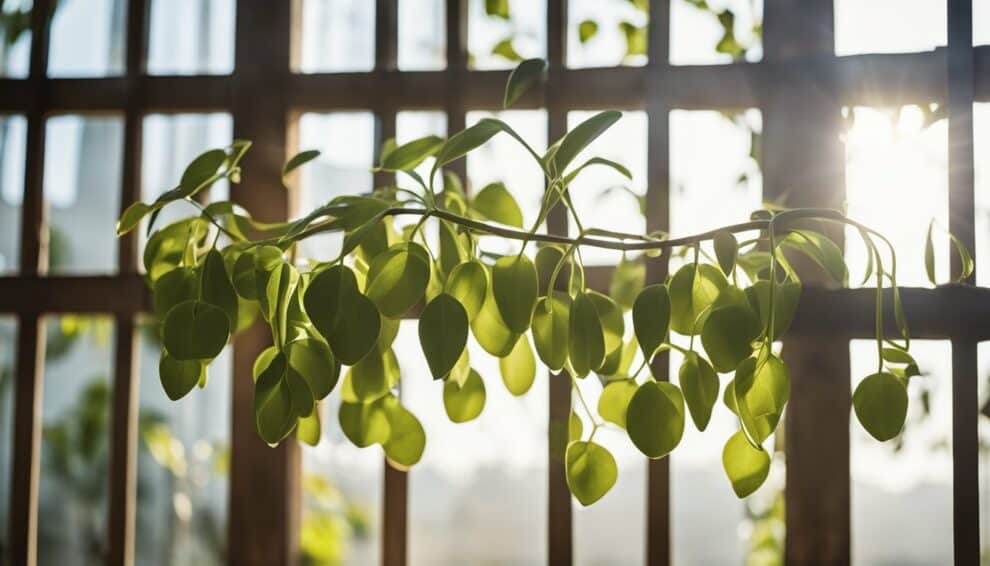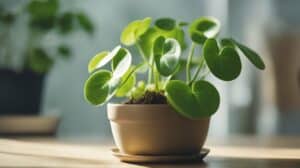Wax plants, also known as Hoya carnosa, are a popular houseplant due to their unique appearance and ease of care. These plants are native to Southeast Asia and are known for their waxy leaves and fragrant flowers. While they can be purchased at most garden centers, propagating wax plants can be a fun and rewarding experience for plant enthusiasts.

Propagation is the process of creating new plants from existing ones. With wax plants, propagation is relatively simple and can be done through stem cuttings or layering. Propagation allows for the creation of multiple plants from a single parent plant, making it an affordable and sustainable way to expand your collection. In this article, we will explore the different methods of propagating wax plants and provide step-by-step instructions for each.
Understanding Wax Plants
Species Overview
The Wax Plant (Hoya carnosa) is a popular houseplant that is known for its waxy leaves and fragrant flowers. It is a member of the Apocynaceae family and is native to Southeast Asia and Australia. There are over 200 species of Hoya, but Hoya carnosa is the most commonly grown.
Wax Plants are known for their thick, waxy leaves that help them retain moisture in dry environments. The leaves are typically dark green and glossy, and can range in size from small and round to large and ovate. The plant produces clusters of small, star-shaped flowers that are often pink or white and have a sweet, honey-like fragrance.
Ideal Growing Conditions
Wax Plants are relatively easy to care for and can thrive in a variety of growing conditions. Here are some ideal growing conditions for Wax Plants:
-
Light: Wax Plants prefer bright, indirect light. Too much direct sunlight can scorch the leaves, while too little light can cause the plant to become leggy and weak.
-
Temperature: Wax Plants prefer temperatures between 60-85°F (15-29°C). They can tolerate cooler temperatures, but should be protected from frost.
-
Humidity: Wax Plants prefer high humidity, but can tolerate lower humidity levels. To increase humidity, mist the leaves regularly or place the plant on a tray of pebbles filled with water.
-
Soil: Wax Plants prefer well-draining soil that is rich in organic matter. A mixture of peat moss, perlite, and vermiculite is ideal.
-
Water: Wax Plants prefer to be kept on the drier side, so allow the soil to dry out slightly between waterings. Overwatering can lead to root rot and other issues.
By providing the right growing conditions, Wax Plants can thrive and produce beautiful, fragrant flowers.
Propagation Basics

Preparation
Before propagating a wax plant, it is essential to gather the necessary materials. These include:
- Pruning shears
- Potting soil
- A container with drainage holes
- Watering can
- Rooting hormone (optional)
It is also essential to choose a healthy and mature plant for propagation. The plant should have at least three leaves and a stem that is at least four inches long.
Propagation Methods
There are two primary methods for propagating wax plants: stem cuttings and layering.
Stem Cuttings
To propagate a wax plant using stem cuttings, follow these steps:
- Cut a stem that is at least four inches long from the parent plant using pruning shears.
- Remove the leaves from the bottom two inches of the stem.
- Dip the cut end of the stem into rooting hormone (optional).
- Plant the stem in potting soil, making sure that the bottom two inches are buried.
- Water the soil thoroughly and place the container in a bright, indirect light.
Layering
To propagate a wax plant using layering, follow these steps:
- Choose a healthy and mature stem on the parent plant.
- Make a small cut on the stem where it touches the soil.
- Dust the cut with rooting hormone (optional).
- Bury the cut section of the stem in potting soil.
- Water the soil thoroughly and place the container in a bright, indirect light.
Both methods typically take several weeks for the roots to develop, and it is important to keep the soil moist during this time. Once the roots have developed, the new plant can be transferred to a larger container and cared for as usual.
Aftercare and Troubleshooting

Post-Propagation Care
Once the wax plant cuttings have rooted, it is important to provide the right conditions for them to grow into healthy plants. Here are some tips for post-propagation care:
- Light: Wax plants prefer bright, indirect light. Place the newly propagated plants in a spot with filtered sunlight or under grow lights for 12-14 hours a day.
- Watering: Water the plants when the top inch of soil is dry. Avoid overwatering as it can lead to root rot.
- Fertilizer: Feed the plants with a balanced fertilizer once a month during the growing season (spring and summer).
- Pruning: Once the new plants have grown to a reasonable size, prune them to encourage bushier growth.
Common Issues and Solutions
Even with the best care, wax plants can encounter some problems. Here are some common issues and their solutions:
- Yellowing leaves: If the leaves turn yellow, it could be a sign of overwatering or underwatering. Adjust the watering schedule accordingly.
- Pests: Wax plants are susceptible to mealybugs and spider mites. Use a neem oil spray or wipe the leaves with a damp cloth to get rid of them.
- No growth: If the newly propagated plant is not growing, it could be due to lack of light or nutrients. Move the plant to a brighter spot or fertilize it with a balanced fertilizer.
By following these tips, one can ensure that their wax plants thrive and continue to produce beautiful, waxy blooms.
Frequently Asked Questions

What are the steps to propagate a Hoya carnosa cutting in soil?
To propagate a Hoya carnosa cutting in soil, follow these steps:
- Take a cutting from a healthy, mature plant.
- Remove the bottom set of leaves from the cutting.
- Dip the cut end of the cutting in rooting hormone.
- Plant the cutting in a well-draining soil mix.
- Water the soil thoroughly and keep it moist but not waterlogged.
- Place the cutting in a warm, bright location but out of direct sunlight.
- Wait for roots to form and new growth to appear.
Can you propagate a Hoya plant using just a leaf?
No, it is not possible to propagate a Hoya plant using just a leaf. Hoya cuttings need a stem section to root and grow.
How long does it take for Hoya cuttings to root in water?
It can take anywhere from 2-6 weeks for Hoya cuttings to root in water. It is important to change the water every few days to prevent bacteria growth and to keep the cutting healthy.
Is it possible to propagate Hoya carnosa without soil?
Yes, it is possible to propagate Hoya carnosa without soil. Hoya cuttings can be propagated in water or in sphagnum moss.
What conditions are needed for Hoya cuttings to root successfully?
Hoya cuttings need warm temperatures, bright but indirect light, and moist but well-draining soil or water. It is important to keep the cutting in a warm and humid environment to encourage root growth.
Where can I find Hoya cuttings for sale?
Hoya cuttings can be found for sale at nurseries, garden centers, and online plant retailers. It is important to purchase cuttings from a reputable source to ensure they are healthy and disease-free.













